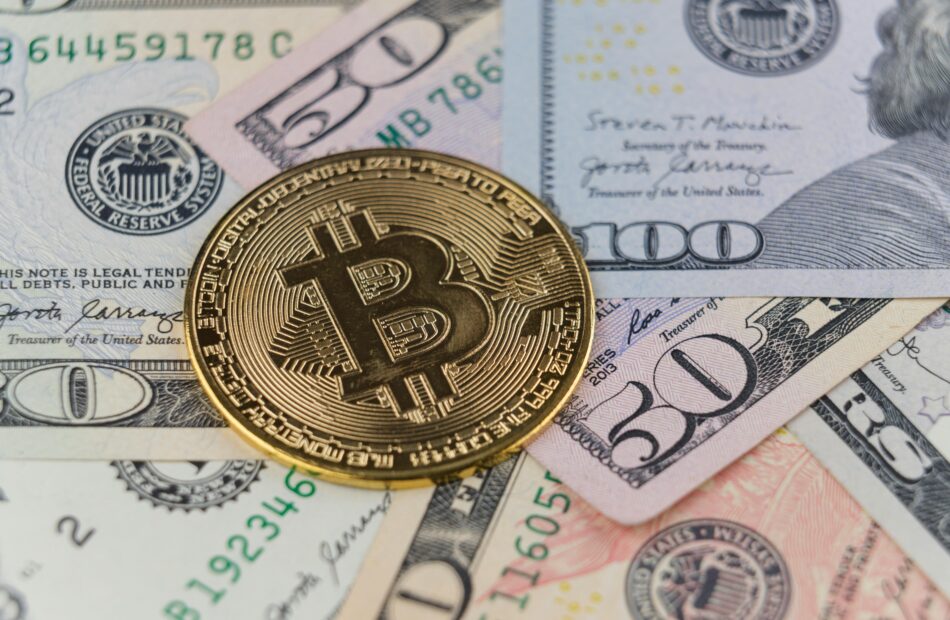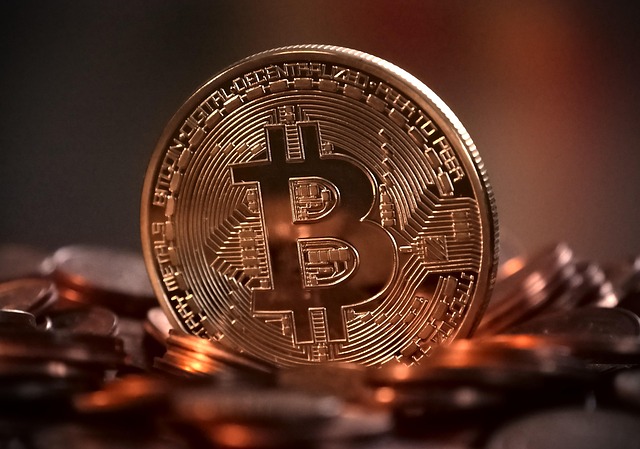Scotland's Lomond School accepts Bitcoin for tuition payments, a first in the UK
The Lomond School in Scotland will accept Bitcoin (BTC) tuition payments beginning in the Autumn semester of 2025, making it the first school in the United Kingdom to do so.Accepting Bitcoin is part of the school’s plan to integrate “sound money principles” from the Austrian School of Economics into the curriculum to “prepare students for the uncertain future,” the announcement reads, adding:”Bitcoin is available to anyone willing to learn — making it more democratic and inclusive, particularly for people in developing nations who lack access to traditional banking. Lomond sees Bitcoin as a perfect real-world case study in economics, computing, ethics, and innovation.”The school has no plans to accept other cryptocurrencies, and will convert the BTC to fiat currency immediately, according to the announcement. It might establish a BTC treasury in the future, pending input from the Lomond community.Lomond’s announcement highlights the growing tide of institutions adopting Bitcoin as a hedge against inflation amid turmoil in the global financial order.Value of the British pound (GBP) 1209-2025. Source: StatistaRelated: Swedish MP proposes Bitcoin reserve to finance ministerBitcoin slowly makes its way through the education systemBitcoin is now part of the curriculum in several schools and universities; some of these institutions have also adopted a BTC treasury strategy to protect reserves against the corrosive effects of inflation on purchasing power.In 2022, the University of Cincinnati added crypto courses to its curriculum to teach students about BTC and emerging Web3 technologies.Mi Primer Bitcoin, a Bitcoin education initiative, partnered with the Ministry of Education in El Salvador in 2023 to integrate Bitcoin education into the school system.Visual of Bitcoin’s hard supply cap expressed through successive halving events. Source: RiverThe University of Wyoming launched the Bitcoin Research Institute in July 2024 to conduct peer-reviewed academic studies about the decentralized digital asset.In February 2025, the University of Austin announced that its endowment fund allocated $5 million to BTC investments. The university’s endowment fund has approximately $200 million in assets under management.Chun Lai, the endowment fund’s chief investment officer, said the fund wanted BTC exposure to capitalize on the financial upside of digital assets as crypto experiences increased institutional adoption.Magazine: TradFi fans ignored Lyn Alden’s BTC tip — Now she says it’ll hit 7 figures: X Hall of Flame
This year's top ETF strategy? Shorting Ether — Bloomberg Intelligence
Betting against Ether has been the best performing exchange traded fund (ETF) strategy so far in 2025, according to Bloomberg analyst Eric Balchunas.Two ETFs designed to take two-times leveraged short positions in Ether claimed (ETH) first and second place in a Bloomberg Intelligence ranking of the year’s top-performing funds, Balchunas said in a post on the X platform. In the year-to-date, ProShares UltraShort Ether ETF (ETHD) and T Rex 2X Inverse Ether Daily Target ETF (ETQ) are up approximately 247% and 219%, respectively, Bloomberg Intelligence data showed. The implications for Ether are “brutal,” Balchunas said. Ether itself is down approximately 54% year-to-date on April 11, according to Cointelegraph’s market data. Both ETFs use financial derivatives to inversely track Ether’s performance with twice as much volatility as the underlying cryptocurrency. Leveraged ETFs do not always perfectly track their underlying assets. Source: Eric BalchunasRelated: Ethereum fees poised for rebound amid L2, blob uptickWeak revenue performanceWith approximately $46 billion in total value locked (TVL), Ethereum is still the most popular blockchain network, according to data from DefiLlama. However, its native token performance has sputtered since March 2024, when Ethereum’s Dencun upgrade — designed to cut costs for users — slashed the network’s fee revenues by roughly 95%.The upgrade kept the network’s revenues depressed, largely because of difficulties monetizing its layer-2 (L2) scaling chains, which host an increasingly large portion of transactions settled on Ethereum. “Ethereum’s future will revolve around how effectively it serves as a data availability engine for L2s,” arndxt, author of the Threading on the Edge newsletter, said in a March X post.Ethereum’s TVL. Source: DeFiLlamaIn the week ending March 30, Ethereum earned only 3.18 ETH from transactions on its layer-2 chains, such as Arbitrum and Base, according to data from Etherscan. To fully recover Ethereum’s peak fee revenues from before the Dencun upgrade, L2’s transaction volumes would need to increase more than 22,000-fold, according to an X post by Michael Nadeau, founder of The DeFi Report. Meanwhile, smart contract platforms — including Ethereum and Solana — suffered across-the-board declines in usage during the first quarter of 2025, asset manager VanEck said in an April report. The diminished activity reflects cooling market sentiment as traders brace for US President Donald Trump’s sweeping tariffs and a looming trade war.Magazine: XRP win leaves Ripple and industry with no crypto legal precedent set
Bitcoin price preparing for 'up only mode' as US bonds suffer worst selloff since 2019
Bitcoin (BTC) is entering what former BitMEX CEO Arthur Hayes calls “up only mode,” as a deepening crisis in the US bond market potentially drives investors away from traditional haven assets and toward alternative stores of value.Loss of confidence in US policy boosts Bitcoin’s upside prospectsOn April 11, the benchmark US 10-year Treasury yield surged above 4.59%—its highest level in two months.US 10-year Treasury note yields daily performance chart. Source: TradingViewThe $29 trillion US Treasury market has dropped more than 2% this week — its steepest decline since September 2019, when a liquidity crunch in the repo market forced the Federal Reserve to intervene.US President Donald Trump’s unpredictable tariff announcements and reversals have fueled the chaos. After threatening sweeping levies on global trading partners, Trump walked back many of the measures within days for certain countries, except China.The US dollar added to the pressure, with its strength against a basket of top foreign currencies—as tracked by the US Dollar Index (DXY)—dropping below the 100 mark for the first time since 2022.US Dollar Index daily performance chart. Source: TradingViewThat further notched its worst weekly decline in over two years.In contrast, Bitcoin rose by over 4.50% amid the US bond market rout, reaching around $83,250 on hopes that the weakening macroeconomic conditions will push US policymakers to act.“It’s on like donkey kong,” wrote Hayes in his April 11 X post, adding: “We will be getting more policy response this weekend if this keeps up. We are about to enter UP ONLY mode for $BTC.”Furthermore, bond traders are now pricing in at least three rate cuts from the Federal Reserve by the end of the year, with a fourth becoming increasingly likely. Rate cuts have historically been bullish for Bitcoin.Target rate probabilities for December Fed meeting. Source: CMEBitcoin eyes ‘parabolic bull run’ due to weaker dollarHistorically, sharp drops in the US Dollar Index have preceded delayed but powerful Bitcoin bull runs, according to crypto analyst Venturefounder.“A falling DXY has typically been a strong bullish signal for Bitcoin,” the analyst wrote on X, pointing to a clear bearish divergence on the chart. DXY vs BTC/USD monthly price chart. Source: TradingView/VenturefounderHe added that if DXY continues to slide toward the 90 level, it could replicate conditions that led to parabolic BTC rallies during the final stages of previous bull markets — each lasting up to a year.Additionally, Bollinger Bands creator John Bollinger offered a bullish outlook for Bitcoin, noting that the cryptocurrency is forming a familiar bottom at $80,000.Related: Bitcoiners’ ‘bullish impulse’ on recession may be premature: 10x ResearchMeanwhile, a maturing falling wedge pattern on the BTC price chart hints at a potential Bitcoin price rally toward $100,000, as Cointelegraph reported earlier.This article does not contain investment advice or recommendations. Every investment and trading move involves risk, and readers should conduct their own research when making a decision.
US Fed 'absolutely' ready to step in if liquidity dries up — Voting member
The US Federal Reserve is prepared to use its vast arsenal of monetary policy tools to prevent financial and economic conditions from deteriorating rapidly but will do so only if liquidity dries up or markets become disorderly, a top central banker said.In an interview with the Financial Times, Boston Fed President Susan Collins said the central bank “would absolutely be prepared” to backstop markets if needed.Source: Walter BloombergWhile it is generally understood that the Fed is always prepared to act quickly to stave off market chaos, Collins’ remarks come on the heels of asset selloffs across stocks and bonds, which have raised concerns about the health of the US financial system.Overall, however, the Fed is “not seeing liquidity concerns,” said Collins. If that were to change, policymakers would have “tools to address concerns about markets functioning or liquidity,” she said.The Fed’s Collins pictured in a December interview with Bloomberg. Source: Bloomberg TelevisionFor investors, Collins’ comments may carry extra weight because she’s a voting member of this year’s Federal Open Market Committee (FOMC) — the 12-person panel responsible for setting interest rates.While Collins and her fellow FOMC members voted to keep interest rates steady at their March meeting, the biggest takeaway was the central bank’s easing off on quantitative tightening by reducing the redemption cap on Treasurys by 80%. Related: S&P 500 briefly sees ‘Bitcoin-level’ volatility amid Trump tariff warThe Fed moves marketsFederal Reserve policy exerts a gravitational pull on global markets through US dollar monetary liquidity, or the ease with which dollars can be used for investments and transactions. Liquidity has a major impact on digital asset prices, including Bitcoin (BTC). This was further corroborated by a 2024 academic paper by Kingston University of London professors Jinsha Zhao and J Miao, which concluded that dollar monetary liquidity “has [a] significant impact on Bitcoin price.”The relationship strengthened after the COVID-19 pandemic, with liquidity conditions accounting for more than 65% of Bitcoin’s price movements. “After the pandemic, [monetary liquidity] is the most important determinant of Bitcoin price, outperforming even fundamental measures of Bitcoin network,” the researchers said. Macro analyst Lyn Alden reached a similar conclusion when she called Bitcoin “a global liquidity barometer” in a September article. Alden drew attention to the relationship between Bitcoin’s price and global M2, or the broad measure of money supply across major global economies. Bitcoin trades in the same direction as global liquidity more than 83% of the time. Source: Lyn AldenAs Cointelegraph reported in early March, an increase in global liquidity and a rebounding business cycle have historically had strong predictive powers for Bitcoin’s price. Liquidity and business cycle trends suggest that BTC’s price could be poised for a recovery in the second quarter. Magazine: Financial nihilism in crypto is over — It’s time to dream big again
Crypto Biz: Ripple’s ‘defining moment,’ Binance’s ongoing purge
Ripple made headlines this week when it became the first crypto-native company to acquire a multi-asset prime broker, potentially setting the stage for wider adoption of its XRP Ledger technology. The acquisition of Hidden Road didn’t come cheap, either, as Ripple doled out $1.25 billion for the brokerage. It was a price Ripple CEO Brad Garlinhouse was happy to pay as the company set its sights on global expansion. Elsewhere, crypto exchange Binance listened to its community and moved to delist 14 tokens that no longer met its quality thresholds. Meanwhile, Binance’s former CEO, Changpeng Zhao, was appointed adviser for Pakistan’s newly formed crypto counsel. All this happened against a backdrop of negative headlines and plunging crypto prices stemming from the US-led trade war, which culminated in President Donald Trump’s executive order establishing a 104% tariff on Chinese imports. Despite the chaos, a panel of industry experts told Cointelegraph that the crypto bull market is far from over. In fact, it hasn’t even started yet. Hidden Road: Ripple’s “defining moment”Ripple’s $1.25 billion acquisition of Hidden Road is the payment company’s “defining moment,” according to Ripple’s chief financial officer, David Schwartz.In a social media post, Schwartz said the acquisition gives Ripple a major boost in promoting its XRP Ledger since Hidden Road already has more than 300 institutional customers and processes more than 50 million transactions per day.Source: David Schwartz“Now, imagine even a portion of that activity on the XRP Ledger — and that’s exactly what Hidden Road plans on doing — not to mention future use of collateral and real-world assets tokenized on the XRPL,” said Schwartz. Ripple has already dabbled in real-world assets (RWAs) by launching a tokenized money market fund in partnership with crypto exchange Archax. That could be the tip of the iceberg for the company’s RWA ambitions. Binance’s purge continuesCryptocurrency exchange Binance will purge 14 tokens from its platform on April 16 following its first “vote to delist” results, where community members nominated projects with troubling metrics.The 14 tokens selected for delisting include Badger (BADGER), Balancer (BAL), Beta Finance, Status (SNT), Cream Finance (CREAM) and Nuls (NULS).These tokens were removed after Binance conducted a “comprehensive evaluation of multiple factors,” including project development activity, trading volumes and responsiveness to the exchange’s due diligence requests.Pakistan taps CZ to broaden crypto ambitionsPakistan landed one of crypto’s biggest influencers as it attempts to promote industry adoption and lure blockchain companies to its shores. On April 7, the newly created Pakistan Crypto Council (PCC) appointed former Binance CEO Changpeng “CZ” Zhao as its crypto adviser. Pakistan’s finance ministry said Zhao will advise the PCC on crypto regulations, infrastructure development and adoption.CZ is appointed as an adviser by Pakistan’s Ministry of Finance. Source: Business RecorderAfter being lukewarm on crypto, Pakistan is fully embracing the industry in recognition of its transformative impact. The country has become a hotbed of crypto activity thanks to rising retail adoption and remittance activity. “Pakistan is done sitting on the sidelines,” said Bilal bin Saqib, the CEO of the PCC. “We want to attract international investment because Pakistan is a low-cost high-growth market with […] a Web3 native workforce ready to build.”Crypto bull market hasn’t loaded yetWith investors wondering whether Bitcoin (BTC) and altcoins have already peaked, an industry panel told Cointelegraph’s Gareth Jenkinson that the best is yet to come. Cointelegraph Managing Editor Gareth Jenkinson, left, hosts a panel on crypto market conditions in Paris, France. Source: CointelegraphSpeaking at a LONGITUDE by Cointelegraph panel in Paris, France, MN Capital founder Michael van de Poppe said he believes the bull market “is actually getting started from this point.”Drawing parallels between the recent market crash and the COVID-19 meltdown of March 2020, van de Poppe said the US Federal Reserve will eventually step in to backstop investors.Fellow panelist and Messari CEO Eric Turner agreed, saying, “We never had a bull market,” but rather “two sides of the market” driven by Bitcoin exchange-traded funds and the memecoin frenzy.Crypto Biz is your weekly pulse on the business behind blockchain and crypto, delivered directly to your inbox every Thursday.
Bitcoin’s 10% weekly gain amid worrying US economic data shows crypto trader sentiment shift
A key Bitcoin (BTC) metric signaled a potential shift in its positioning after BTC’s long-term holder realized cap (LTH Realized Cap) surpassed $18 billion for the first time since September 2024. Data from CryptoQuant indicated that this cohort has exhibited aggressive accumulation, which previously marked the BTC bottom in Q3 2024. The LTH realized cap measures the BTC cost basis of investors, holding their allocation for 155 days or more. A sharp increase hints that these long-term holders are in an accumulation phase, parallel with bullish behavior. Bitcoin LTH net position realized cap. Source: CryptoQuantAs illustrated in the chart, a spike in this metric has preceded bullish rallies in the past. Most recently, the LTH realized cap reached $18 billion on Sept. 8, 2024, after which Bitcoin registered 100% returns over the next few months. Another key confluence that matches the current bottom setup with September 2024 is the significant drop in open interest. BTC’s OI reached an all-time high of $39 billion in July but dropped by 25% by September. Similarly, Bitcoin’s open interest dropped 28% between Dec. 18 and April 8, Bitcoin open interest. Source: CoinGlassThe concurrent rise in LTH Realized Cap and a leverage wipeout strongly support the likelihood of a Bitcoin price bottom. However, Bitcoin’s open interest has surged by nearly 10% in the past 24 hours, suggesting that the price action following this spike could offer better directional bias in the coming days. Related: Bitcoiners’ ‘bullish impulse’ on recession may be premature: 10x ResearchBitcoin builds support at $79KAfter forming a new yearly low at $74,500 on April 7- April 9, BTC prices have rallied by almost 10% over the past three days. With respect to price levels below the $80,00 level, Glassnode data revealed that BTC had established credible support at the $79,000. In an X post, the data analytics platform mentioned, “Looking at Cost Basis Distribution, Bitcoin has built notable support at $79K, with ~40K BTC accumulated there. It has also worked through the $82.08K cluster (~51K BTC).”Bitcoin heatmap based on cost basis distribution. Source: X.comAs illustrated in the April 6- April 11 heatmap, supply distribution highlights investor accumulation patterns. This follows Bitcoin’s rally past $81,000, spurred by a 2.4% US CPI rate and President Trump’s 90-day tariff pause, with market sentiment leaning toward cautious optimism for a relief rally. Likewise, anonymous technical analyst Cold Blooded Shiller noted a descending trendline for Bitcoin, with BTC price testing a potential bullish breakout. The analyst said, “Got to admit, that’s looking very enticing for BTC.”Bitcoin 1-day chart analysis by Cold Blooded Shiller. Source: X.comRelated: Bollinger Bands creator says Bitcoin forming ‘classic’ floor near $80KThis article does not contain investment advice or recommendations. Every investment and trading move involves risk, and readers should conduct their own research when making a decision.
Fed’s Kashkari hints at liquidity support — Is $100K Bitcoin back on the table?
Neel Kashkari, President of the Minneapolis Federal Reserve, addressed the issue of rising Treasury yields on April 11, suggesting that they might indicate a shift in investor sentiment away from United States government debt. Kashkari highlighted that the Federal Reserve has tools to provide more liquidity if necessary.While underscoring the importance of maintaining a strong commitment to reducing inflation, Kashkari’s remarks signal a possible turning point for Bitcoin (BTC) investors amid growing economic uncertainty. US Treasury 10-year yields. Source: TradingView / CointelegraphThe current 10-year US government bond yield of 4.5% is not unusual. Even if it approaches 5%, a level last seen in October 2023, this does not necessarily mean investors have lost confidence in the Treasury’s ability to meet its debt obligations. For example, gold prices only surpassed $2,000 in late November 2023, after yields had already decreased to 4.5%.Will the Fed inject liquidity, and is this positive for Bitcoin?Rising Treasury yields often signal concerns about inflation or economic uncertainty. This is crucial for Bitcoin traders because higher yields tend to make fixed-income investments more appealing. However, if these rising yields are perceived as a sign of deeper systemic issues—such as waning confidence in government fiscal policies—investors may turn to alternative hedges like Bitcoin.Bitcoin/USD (left) vs. M2 global money supply. Source: BitcoinCounterFlowBitcoin’s trajectory will largely depend on how the Federal Reserve responds. Liquidity injection strategies typically boost Bitcoin prices while allowing higher yields could increase borrowing costs for businesses and consumers, potentially slowing economic growth and negatively impacting Bitcoin’s price in the short term.One strategy the Federal Reserve could use is purchasing long-term Treasurys to reduce yields. To offset the liquidity added through bond purchases, the Fed might simultaneously conduct reverse repos—borrowing cash from banks overnight in exchange for securities. A weak US dollar and banking risks could pump Bitcoin priceWhile this approach could temporarily stabilize yields, aggressive bond purchases might signal desperation to control rates. Such a signal could raise concerns about the Fed’s ability to manage inflation effectively. These concerns often weaken confidence in the dollar’s purchasing power and may push investors toward Bitcoin as a hedge.Another potential strategy involves providing low-interest loans through the discount window to give banks immediate liquidity, reducing their need to sell long-term bonds. To counterbalance this liquidity injection, the Fed could impose stricter collateral requirements, such as valuing pledged bonds at 90% of their market price.Systemic risk in the US financial services industry. Source: Cleveland FedThis alternative approach limits banks’ access to cash while ensuring borrowed funds remain tied to collateralized loans. However, if collateral requirements are too restrictive, banks might struggle to obtain sufficient liquidity even with access to discount window loans. Related: Bitcoiners’ ‘bullish impulse’ on recession may be premature: 10x ResearchAlthough it is too early to predict which path the Fed will take, given the recent weakness in the US dollar alongside a 4.5% Treasury yield, investors might not place full trust in the Fed’s actions. Instead, they may turn to safe-haven assets such as gold or Bitcoin for protection.Ultimately, rather than focusing solely on the US Dollar Index (DXY) or the US 10-year Treasury yield, traders should pay closer attention to systemic risks in financial markets and the spreads on corporate bonds. As these indicators rise, confidence in the traditional financial systems weakens, potentially setting the stage for Bitcoin to reclaim the psychological $100,000 price level.This article is for general information purposes and is not intended to be and should not be taken as legal or investment advice. The views, thoughts, and opinions expressed here are the author’s alone and do not necessarily reflect or represent the views and opinions of Cointelegraph.
Pakistan proposes compliance-based crypto regulatory framework — Report
Regulators in Pakistan have proposed a regulatory framework for digital assets that is compliance-focused, in accordance with rules laid out by the Financial Action Task Force (FATF), the supranational organization that polices finance for money laundering, The Express Tribune reported.According to the report, Pakistan’s Federal Investigation Agency (FIA) introduced the regulatory framework to address terrorism financing, money laundering provisions, and Know Your Customer (KYC) controls enforced by the supranational organization. The report cited FIA Director Sumera Azam as saying:”This is a paradigm shift in how Pakistan views digital finance. The policy proposal seeks to strike a historic balance between technological advancement and national security imperatives.”The proposed framework is subject to legislative approval and input from digital asset firms operating in the country, with an expected multi-phased rollout beginning in 2026.Regulators in Pakistan recently spearheaded a regulatory pivot embracing cryptocurrencies after being explicitly anti-crypto for years. The government’s anti-crypto stance hit a crescendo in 2023 when Pakistani officials called for a country-wide ban on digital assets.Appointments to the Pakistan Crypto Council. Source: Bilal Bin-Saqib. Source: Bilal Bin-SaqibRelated: Pakistan eyes crypto legal framework to boost foreign investmentPakistan embraces the future of money in regulatory shiftIn May 2023, former minister of state for finance and revenue, Aisha Ghaus Pasha said that Pakistan would never legalize cryptocurrencies due to the potential for digital assets to circumvent FATF regulations.Less than two years later in February 2025 the Finance Ministry of Pakistan signaled a seismic regulatory shift by forming the Pakistan Crypto Council to establish clear crypto regulations in the country and attract foreign investment.”Pakistan is a low-cost, high-growth market, with 60% of the population under 30. We have a web3 native workforce ready to build,” CEO of the Pakistan Crypto Council Bilal bin Saqib said in a March 20 X post.Binance co-founder Changpeng Zhao meets with Pakistan foreign minister Ishaq Dar. Source: Pakistan’s Ministry of Foreign AffairsThe Council is exploring using excess energy to mine Bitcoin (BTC) as part of a broader effort to turn Pakistan into an international hub for crypto mining.On April 7, the Council appointed Binance co-founder Changpeng Zhao as a crypto adviser to guide the organization’s policy efforts.Magazine: How crypto laws are changing across the world in 2025








